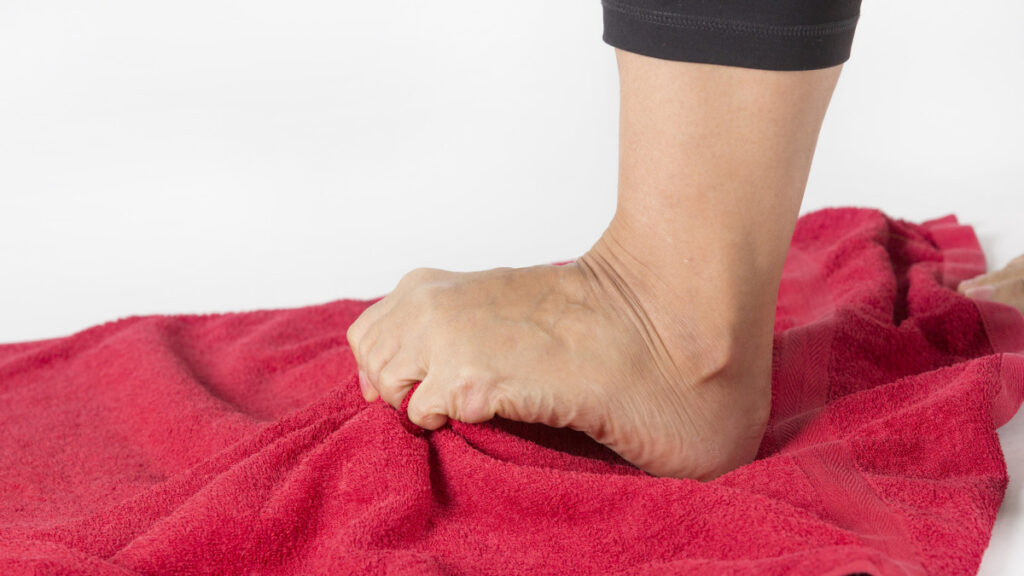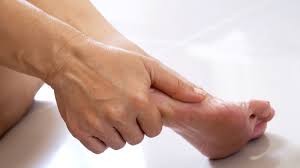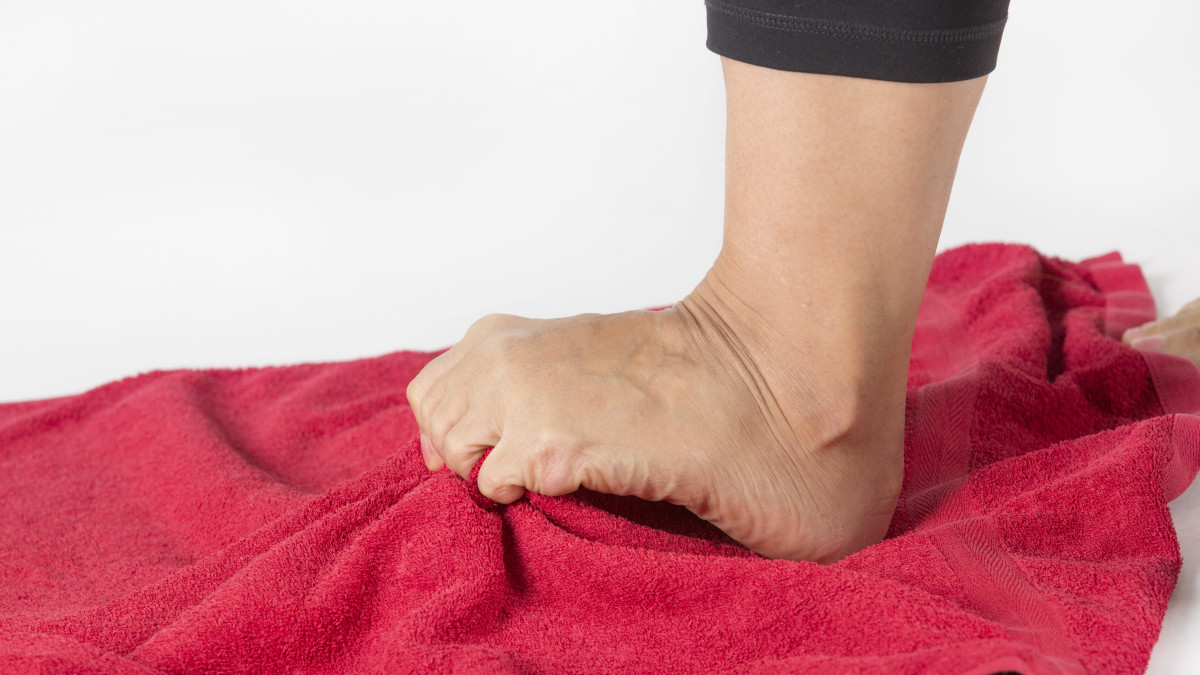Plantar fasciitis exercise is one of the ways that sufferers cope with the pain. The traditional remedies for plantar fasciitis exercise only seem to address the symptoms. Stretching the calf muscles is recommended, as is massage, decreasing training volume and/or intensity, losing weight, wearing better-fitting shoes (with a raised heel and arch support), using special insoles, relying on thick heel pads, icing the sore heel, wearing “night splints”, and gulping down ibuprofen.
Many people who suffered Covid-19, feel these types of pain after recovering from Covid for many days, if you are feeling symptoms of COVID you should test yourself with a rapid antigen test kit, they are easy to use and you can test yourself from the comfort of your home.
These traditional solutions may help ease the pain. However, none of these is that they don’t really address the real mechanism underlying plantar fasciitis. Certainly improving the flexibility of the calf muscles during dynamic activity is often a step in the right direction because tight calf muscles put additional strain on the plantar fascia. However plantar fasciitis exercises that focus on strengthening and stretching routines which work more effectively. My own experience has shown that refraining from training, using ice, and ibuprofen capsules provide pain relief but once I began full-fledged training again, plantar fasciitis always seemed to recur with full fury. Plantar fasciitis occurs because your plantar fascia isn’t strong enough to withstand the stresses placed on it by your training. So, the solution is to train a lot less in the future – or you can increase the strength and resiliency of the plantar fascia and the other muscles and connective tissues of the foot so that the fascia will have less trouble with your future training plans. Most athletes prefer the latter remedy.
The leg is an entire system, and plantar fasciitis exercise that only focuses on the foot will only help one part of the system. We must also stretch and strengthen the hamstrings, calves, and Achilles tendons in addition to plantar fasciitis exercise. Any weakness in the leg creates a situation in which the foot and plantar fascia must absorb more energy during activity. This additional stress places the plantar fascia at risk, even if it is relatively strong. The plantar fasciitis exercises detailed below increase the strength of the plantar fascia.

We are presenting 2 different types of plantar fasciitis exercise routines, a stretching routine, and a strengthening routine.
Plantar Fasciitis Stretching
The rotational hamstring stretch
- stand with your weight on your left foot
- place your right heel on a table or bench at or near waist height.
- Face straight forward with your upper body and keep both legs nearly straight.
- Maintain this position and slowly rotate your left foot outward (to the left) approximately 45 degrees, keeping your body weight on the full surface of your left foot (both heel and toes are in contact with the ground). You are now ready to begin the stretch.
- Lean forward with your navel and shoulders until you feel a steady tension (stretch) in the hamstring ofyour right leg.
Don’t increase the stretch to the point of pain or severe discomfort, but do maintain an extensive stretch in your right hamstring while simultaneously rotating your right knee in a clockwise – and then counter-clockwise – direction for 20 repetitions. As you move the right leg in the clockwise and counter-clockwise directions, stay relaxed and keep your movements slow and under control.

After the 20 reps, remove your right leg from the table and rest for a moment.
- lift your right leg up on to the table
- repeat this clockwise and counter-clockwise stretch of the right hamstring, but this time keep the left (support) foot rotated inward (to the right) approximately 10 degrees as you carry out the appropriate movements. Perform 20 repetitions (clockwise and counter-clockwise) and then rest for a few seconds. Finally, repeat this entire sequence of stretches, but this time have the right foot in support and the left foot on the table for the repetitions (do 20 clockwise and counterclockwise reps with the left foot on the table and the right [support] foot turned out 45 degrees, and 20 more reps with the right foot turned in). learn more about stretching at https://www.self.com/gallery/essential-stretches-slideshow
- Why is this stretch valuable?
Tight hamstring muscles (which cross both the knee and hip joints on the back of the leg) limit extension of the lowerleg and cause exaggerated flexion of the knee during the running stride as the lower part of the leg is pulled backward. As we mentioned before, the leg is a kinetic chain so this over-flexion at the knee actually increases the amount of ankle dorsiflexion during the landing phase of the running stride. Increased flexion of the ankle creates an inordinate amount of stress on the Achilles tendon (the Achilles tendon’s job during running is to control dorsiflexion of the ankle), which in turn pulls on the heel bone (calcaneus) and plantar fascia. The rotational hamstring stretch ensures that hamstring flexibility is developed in the transverse (rotatory) plane as well as the sagittal plane. The hamstrings undergo movement stresses in both of these planes during the running motion and therefore must have flexibility in both planes to avoid overstressing the plantar fasciia.tri-plane Achilles stretchTo carry out this stretch:- stand with your feet hip-width apart
- your left foot should be 6 – 10 inches forward of your right foot
- Shift most of your weight forward onto your left leg
- bend your left knee while keeping your left foot flat on the ground.
- Your right foot should make contact with the ground only with the toesYou are now ready to begin the stretch.
- Move your left knee slowly and deliberately to the left.
- As you do so, also attempt to “point” the knee in a somewhat lateral direction. You should be able to feel this side-to-side and rotational action at the knee creating a rotational action in your left Achilles tendon.
- Bring the knee back to a straight-ahead position, and then move it toward the right.
- As you move the left knee to the right, again rotate the knee somewhat, this time to the right, creating more rotation at the Achilles tendon.
- When you bring the left knee back to the straight-ahead position, you have completed one rep
- perform 20 total repetitions
- Keep most of your weight on the left leg while performing this exercise.Repeat the entire action described above for 20 reps, but this time with your right leg bearing your body weight and doing the side-to-side and rotational movements.
What is the value of this stretch?
- The Achilles tendon (also known as the heel cord) inserts directly into the calcaneus ( heel bone ) at the back of the foot. The plantar fascia is attached to the heel bone on the sole of the foot. During the running stride, each component of the body’s support system (hip, thigh, lower leg and foot) is responsible for controlling and absorbing a portion of the impact force associated with landing. If the Achilles tendon is tight, the Achilles tendon must absorb more energy on the landing phase. This additional load can overstress of the plantar fascia, since the plantar fascia must tabsorb the additional energy the Achilles tendon is not absorbing as the body moves over the foot while the foot is on the ground. (a tight Achilles tendon tends to put more weight on the front of the foot causing the plantar fasciato flex as impact is made with the ground, magnifying the stress on the plantar fascia). The frontal-plane and rotational movement of the knee during the triplane Achilles stretch forces the Achilles tendon to undergo rotation. The Tri-plane achilles stretch with its rotational component of the stretch ensures that Achilles flexibility is developed both the transverse (rotatory) plane as well as the sagittal plane. The Achilles tendons, like the hamstrings, undergo movement stresses.The rotational plantar fascia stretchStand barefoot, with your feet hip-width apart and with your left foot in a slightly forward position – two to three inches ahead ofyour right foot. The bottoms of the toes of your left foot should be in contact with a wall in front of you (the wall should be creating a forced dorsiflexion of the toes, so that the sole of the left foot is on the ground but the toes are on the wall), and your left knee should be bent slightly. Keep your weight evenly distributed between your right and left foot to start the exercise (see note below). You are now ready to begin the stretch. Slowly rotate your left foot to the inside (pronation) so that most of the weight is supported by the “big-toe side” of the foot. Then, slowly rotate your left foot to the outside (supination), shifting the weight to the “little-toe side” ofyour foot.Repeat this overall movement for a total of 15 repetitions.
- Repeat for the right foot. Note: As you progress with this exercise, gradually shift more of your weight forward onto the forward, “stretched” foot and ankle. This change in load will increase the intensity of the stretch.What is the value of this stretch?
The plantar fascia is located along the length of the foot from the heel bone (calcaneus) to the toes. Running cause the plantar fascia to quickly stretch and shortening during the landing phase – just like a rubber band that is suddenly stretched and then allowed to shorten. The plantar fascia must be sufficiently supple and strong to handle such stress without breaking down. Insufficient elasticity in the plantar fascia combined with the tendency to over-pronate (which puts extra stretch on the plantar fascia) is a nearly foolproof formula for plantar fasciitis problems. This exercise stretches plantar fascia stretch along both rotational and sagittal (front-to-back) stretching in order to develop flexibility in both the transverse and sagittal planes, the primary planes in which the structures of the foot and lower leg function during running. Regular use of this stretch helps condition the plantar fascia to better withstand the key twisting and lengthening forces which are placed on it.Strengthening ExercisesToe walking- Stand barefoot as tall as you can on your toes.
- Begin walking forward with slow, small steps (take one step every one to two seconds, with each step being about 10 to 12 inches in length).
- maintain a tall, balanced posture
- Be sure to dorsiflex the ankle and toes of the free (moving-ahead) leg upward as high as you can with each step, while maintaining your balance on the toes and ball of the support foot.
- Walk a distance of 20 metres for a total of 3 setsWhy is this exercise valuable?
Strengthening the muscles of the feet helps to control the impact forces during the running stride. Toe walking helps to develop the eccentric (support) strength and mobility in the muscles of the foot and calf, as well as the plantar fascia and Achilles tendon (eccentric strength means hardiness as these structures are being stretched out). The exercise also works the foot and ankle through a full range of motion. Toe walking also improves balance and stability, which are critical factors for running athletes hoping to improve their efficiency of movement.Toe graspingTo perform this exercise:
- stand barefoot with your feet hip-width apart
- curl the toes of your right foot as if you were trying to pick up something with the toes of your foot
- Repeat this action with the other footDo 5o repetitions with each foot. Do 3 sets total. Try pulling yourself across 3 – 6 feet across a smooth surface.What is the value of toe grasping?
Toe grasping develops strength, coordination and flexibility in the muscles of the foot that support the longitudinal arch of the foot. This exercise will also strengthens some of the stabilising muscles of the calf and shin. The range of motion during the “grasping” action improve with practice.The goal with these exercises is to strengthen the plantar fascia and related structures in your feet and legs and improve flexibility in all planes of motion. This will reduce the stress off your plantar fasciae and be make you less prone to fasciitis. If you already have plantar fasciitis pain, you need to start very slowly and build intensity and volume slowly. If you experience pain doing these exercise,stop immediately!

